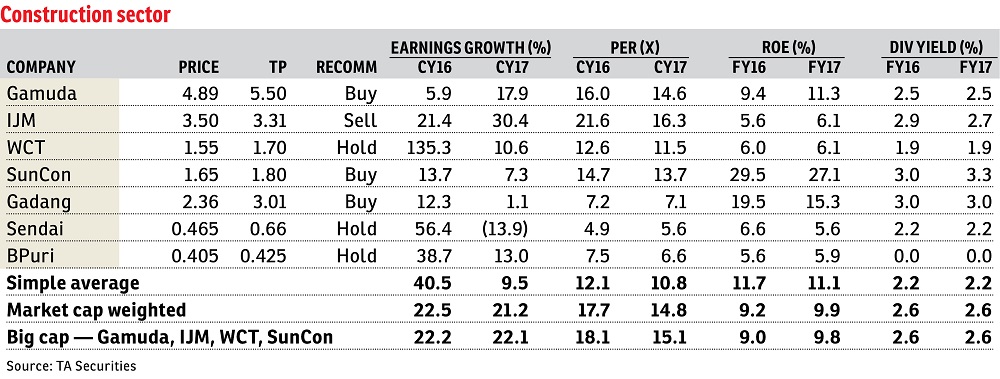Construction sector
Maintain overweight: Malaysia and Singapore have inked the memorandum of understanding (MoU) for the proposed Kuala Lumpur-Singapore high-speed rail (HSR) project. A bilateral agreement between both countries is expected to be signed by the end of this year.
We are encouraged by the signing of the MoU. It is a momentous mileage as this signifies the seriousness by both governments in realising the HSR project. Given the size of the project, estimated between RM50 billion and RM60 billion, this is possibly the single biggest-ever construction project to be implemented in Malaysia. We expect the project to have an impactful boost to the local construction industry throughout the project implementation period.
The MoU captures the key points of the agreement on the project, which include the technical parameters, commercial model, customs, immigration and quarantine (CIQ) clearance, safety and security matters, regulatory framework, as well as project management. Each government would be responsible for the development, construction and maintenance of civil infrastructure and stations in their respective countries.
Construction of the HSR is set to begin in 2018, with completion in 2025. This will be followed by field testing and commissioning. The HSR is expected to be operational by around 2026. The line will consist of eight stations, seven of which will be in Malaysia (Kuala Lumpur, Putrajaya, Seremban, Ayer Keroh, Muar, Batu Pahat and Iskandar Puteri), while the only station in Singapore will be located at Jurong East. The project will involve the construction of a brand-new line with dedicated tracks that will allow trains to reach a maximum speed in excess of 300kph; 335km of the track will be set in Malaysia with the remaining 15km stretch in Singapore. With this, the travel time is expected to be trimmed to 90 minutes.
Singapore and Malaysia CIQ facilities will be co-located at three locations — Kuala Lumpur, Iskandar Puteri and Singapore. International-bound passengers will only need to go through CIQ clearance by both Singapore and Malaysia authorities at the point of departure, ensuring swift and seamless travel.
The target completion date of 2025 for the construction works, in our view, is more realistic than the previous target of 2022. This is given the sheer size of the project, and as some time is required for detailed design, tender process and land acquisition.
Having involved in several rail-related projects such as Taiwan Kaohsiung MRT, Northern Double Track and KVMRT, Gamuda Bhd stands out as a strong contender for the civil works. Other potential local beneficiaries include IJM Corp Bhd, Sunway Construction Group Bhd, WCT Holdings Bhd, Gadang Holdings Bhd, Muhibbah Engineering (M) Bhd, Mudajaya Group Bhd, Bina Puri Holdings Bhd, Ekovest Bhd, Fajarbaru Builder Group Bhd, Kimlun Corp Bhd, Pesona Metro Holdings Bhd, Pintaras Jaya Bhd, Econpile Holdings Bhd and Ikhmas Jaya Group Bhd. We maintain our “overweight” stance on the construction sector. — TA Securities, July 20
This article first appeared in The Edge Financial Daily, on July 21, 2016. Subscribe to The Edge Financial Daily here.
Want to know the price trends of a development? Click here.






